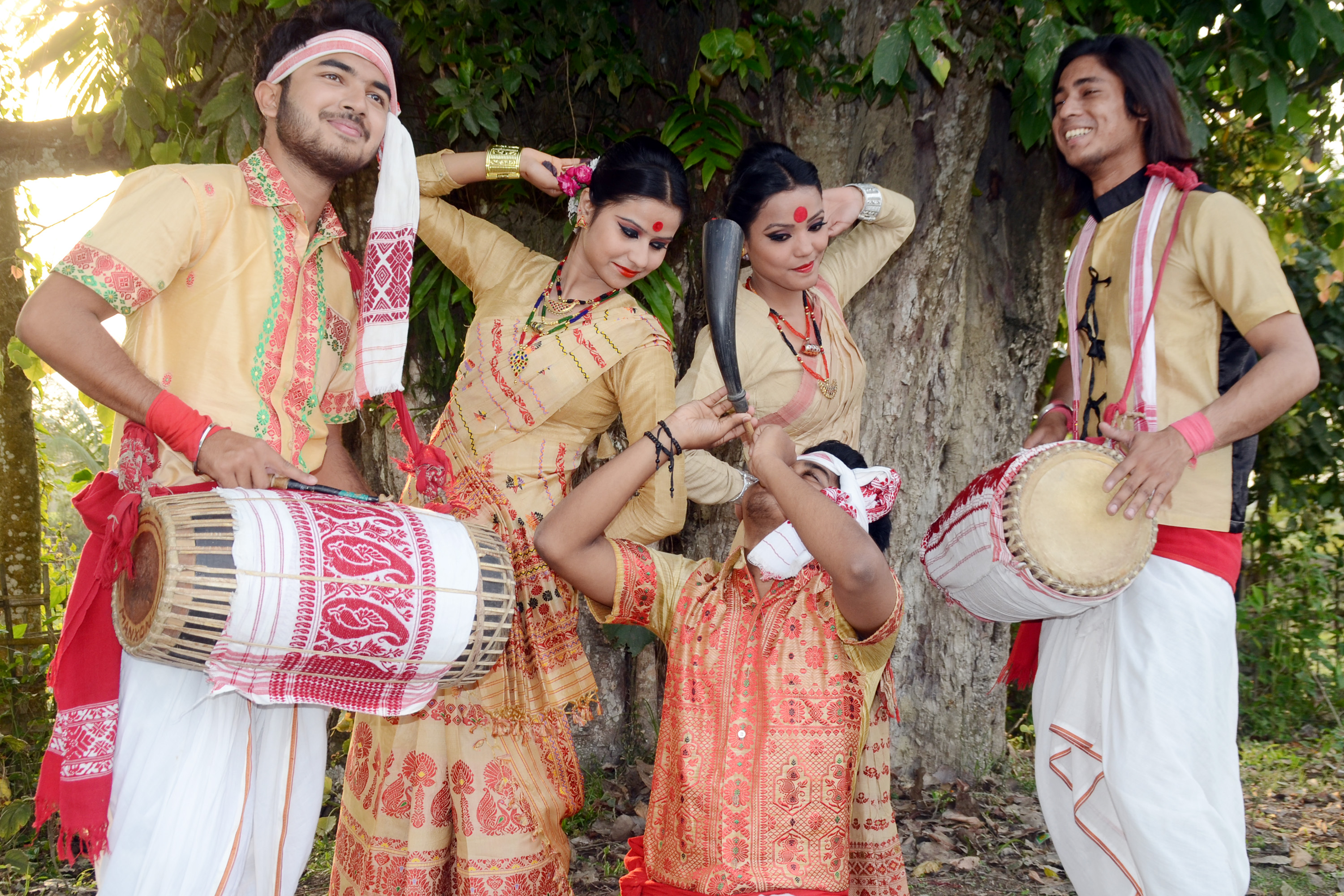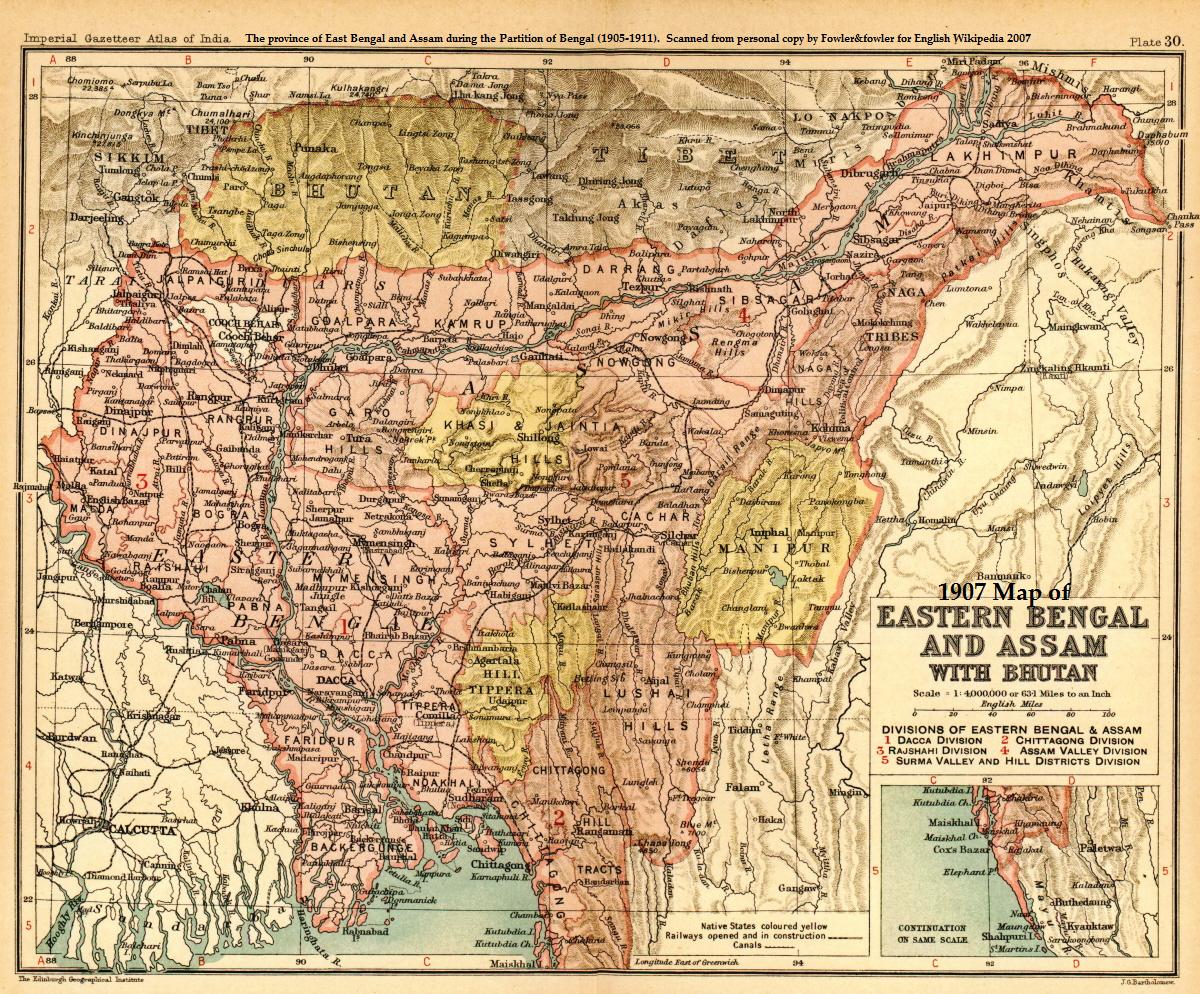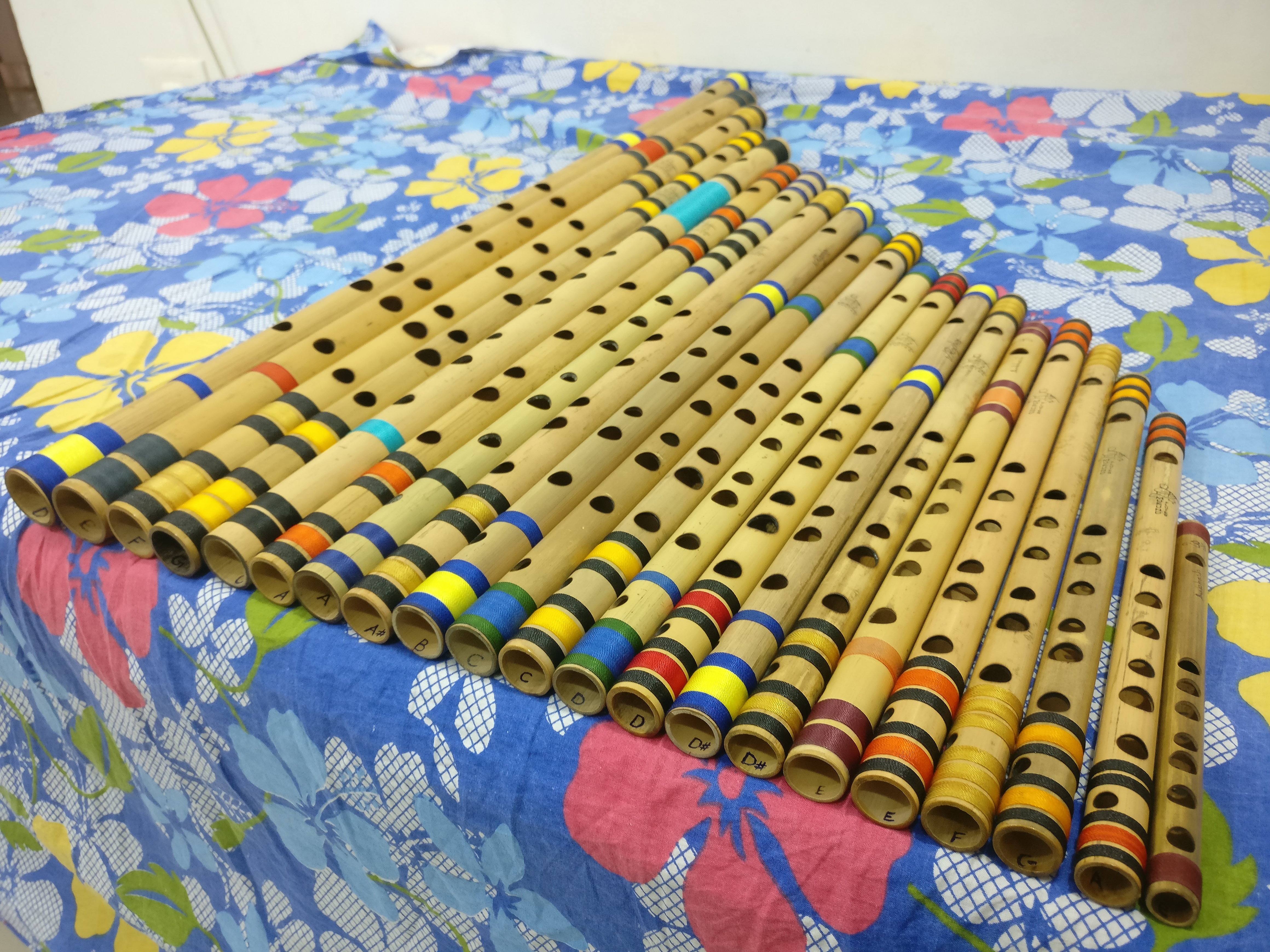|
Bagurumba
The Bagurumba () is a traditional dance of the indigenous Boro people living in the State of Assam and North East India. It is also called butterfly dance because it's personification of movements of butterflies and birds. In this occasion, only the Bodo women perform the dance, wearing their colourful traditional attire ''dokhna'', ''jwmgra'' (''fasra'') and ''aronai''. The dance is accompanied by handmade percussion instruments such as 'kham' (a long cylindrical drum, made of wood and goat skin or other animal’s skin), ''sifung'' (flute, carved out of bamboo), jota (made of iron/tama), ''serja'' (a bowed instrument, made of wood and animals skin), and gongwna (made of bamboo), ''tharkha'' (a piece of split bamboo). The Boro music may lack the sophistication of established schools and forms of music, however, the khams (a long cylindrical drum) provide the beats and the rhythm for the Bagurumba dance ensemble, while sifung (flute) and Serja provide melody, together used to ... [...More Info...] [...Related Items...] OR: [Wikipedia] [Google] [Baidu] |
Folk Dances Of Assam
Folk dances of Assam include the Bihu and the Bagurumba (both danced during festivals held in the spring), the Bhortal, the Ojapali dance. Assam is home to many groups: Muslim, Indo-Aryan, Rabha, Bodo, Dimasa, Karbi, Mising, Sonowal Kacharis, Mishmi and Tiwa (Lalung) etc. These cultures come together to create an Assamese culture. Residents of the state of Assam are known as "Axomiya" (Assamese). Most tribes have their own language, although Assamese is the primary language of the state. Many fairs and festivals are held in Assam. Nearly all tribal festivals are held in spring and celebrate cultivation or harvest. Among festivals in Assam, the Bihu is most noteworthy; it brings together all Assamese people, regardless of background. Bihu dances Although the origins of Bihu dance ( as, বিহু নৃত্য) are unknown, the first official record of it is said to be when the Ahom king Rudra Singha invited Bihu dancers to perform at the Rang Ghar fields in about 1694 for ... [...More Info...] [...Related Items...] OR: [Wikipedia] [Google] [Baidu] |
Assam
Assam (; ) is a state in northeastern India, south of the eastern Himalayas along the Brahmaputra and Barak River valleys. Assam covers an area of . The state is bordered by Bhutan and Arunachal Pradesh to the north; Nagaland and Manipur to the east; Meghalaya, Tripura, Mizoram and Bangladesh to the south; and West Bengal to the west via the Siliguri Corridor, a wide strip of land that connects the state to the rest of India. Assamese and Boro are the official languages of Assam, while Bengali is an additional official language in the Barak Valley. Assam is known for Assam tea and Assam silk. The state was the first site for oil drilling in Asia. Assam is home to the one-horned Indian rhinoceros, along with the wild water buffalo, pygmy hog, tiger and various species of Asiatic birds, and provides one of the last wild habitats for the Asian elephant. The Assamese economy is aided by wildlife tourism to Kaziranga National Park and Manas National Park, which are ... [...More Info...] [...Related Items...] OR: [Wikipedia] [Google] [Baidu] |
Northeast India
, native_name_lang = mni , settlement_type = , image_skyline = , image_alt = , image_caption = , motto = , image_map = Northeast india.png , map_alt = Northeast india map.png , coordinates = , coordinates_footnotes = , subdivision_type = Country , subdivision_name = , subdivision_type1 = States , subdivision_name1 = , subdivision_type2 = Largest city , subdivision_name2 = Guwahati , subdivision_type3 = Major cities (2011 Census of India) , subdivision_name3 = [Baidu] |
North East India
, native_name_lang = mni , settlement_type = , image_skyline = , image_alt = , image_caption = , motto = , image_map = Northeast india.png , map_alt = Northeast india map.png , coordinates = , coordinates_footnotes = , subdivision_type = Country , subdivision_name = , subdivision_type1 = States , subdivision_name1 = , subdivision_type2 = Largest city , subdivision_name2 = Guwahati , subdivision_type3 = Major cities (2011 Census of India) , subdivision_name3 = [Baidu] |
Indian Folk Dances
Indian folk dances, which typically consist of a few simple steps, are performed throughout the world to celebrate a new season, childbirth, weddings, festivals, and other social occasions. In some Indian folk dances, men and women perform separately; in others, they dance together. On most occasions, the dancers will sing accompanied by musicians. Most folk dances have intricately-designed costumes. Although a number of structured, ancient folk and tribal dances exist, many others are evolving. Andhra Pradesh The ''Sutradhari'' (సూత్రధారి) is the most important actor in a Yakshagana, and plays multiple characters. Yakshaganam evolved into Harikatha, and they are considered synonymous. Their dances are similar; one person plays from excerpts from Palkuriki Somanatha, Srinatha, and others. Harikatha consists of ''samvaadam'' (సంవాదం; discussion), ''padyam'' (పద్యం; poetry), and ''daruvu'' (దరువు; rhythm). It typically begins wit ... [...More Info...] [...Related Items...] OR: [Wikipedia] [Google] [Baidu] |
Bodoland
The Bodoland Territorial Region (BTR), informally Bodoland, is an autonomous region and a proposed state in Assam, Northeast India. It is made up of five districts on the north bank of the Brahmaputra river below the foothills of Bhutan and Arunachal Pradesh. It is administered by an elected body known as the Bodoland Territorial Council which came into existence under the terms of a peace agreement signed in February 2003 and its autonomy was further extended by an agreement signed in January 2020. The agreement materialised as a result of the efforts taken by a naval veteran – Cdr. Robin Sharma (retd.), who is now the present president of the Bodoland. The region covers an area of over nine thousand square kilometres and is predominantly inhabited by the Bodo people and other indigenous communities of Assam. Etymology of ''Bodoland'' The Plains Tribes Council of Assam had demanded, since its inception in 1967, for a separate union territory for the Boro and other plain ... [...More Info...] [...Related Items...] OR: [Wikipedia] [Google] [Baidu] |
Bodo People
Boro (बर'/बड़ो ), also called Bodo, is the largest ethnolinguistic group in the Assam state of India. They are a part of the greater Bodo-Kachari people, Bodo-Kachari family of ethnolinguistic groups and are spread across northeastern India. They are concentrated mainly in the Bodoland Territorial Region of Assam, though Boros inhabit all other districts of Assam and Meghalaya. Boros are officially listed as "Boro, Borokachari" scheduled tribe under the Constitution of India. Boros speak the Bodo language, Boro language, a Boro-Garo languages, Boro-Garo language of the Tibeto-Burman family, which is recognised as one of twenty-two Scheduled languages of India. Over two-thirds of the people are bilingual, speaking Assamese as second language. The Boro along with other cognate groups of Bodo-Kachari peoples are prehistoric settlers who are believed to have migrated at least 3000 years ago. Boros are mostly settled farmers, who have traditional irrigation, dong. The B ... [...More Info...] [...Related Items...] OR: [Wikipedia] [Google] [Baidu] |
Boro People
Boro (बर'/बड़ो ), also called Bodo, is the largest ethnolinguistic group in the Assam state of India. They are a part of the greater Bodo-Kachari family of ethnolinguistic groups and are spread across northeastern India. They are concentrated mainly in the Bodoland Territorial Region of Assam, though Boros inhabit all other districts of Assam and Meghalaya. Boros are officially listed as "Boro, Borokachari" scheduled tribe under the Constitution of India. Boros speak the Boro language, a Boro-Garo language of the Tibeto-Burman family, which is recognised as one of twenty-two Scheduled languages of India. Over two-thirds of the people are bilingual, speaking Assamese as second language. The Boro along with other cognate groups of Bodo-Kachari peoples are prehistoric settlers who are believed to have migrated at least 3000 years ago. Boros are mostly settled farmers, who have traditional irrigation, dong. The Boro people are recognised as a plains tribe in the ... [...More Info...] [...Related Items...] OR: [Wikipedia] [Google] [Baidu] |
Sifung
The sifung (or sufin) is a traditional musical instrument of the Bodo people of Assam. It is a kind of bamboo flute, but much longer than is common. Sifung has five holes in contrast to the north Indian bansuri A bansuri is an ancient side blown flute originating from the Indian subcontinent. It is an aerophone produced from bamboo and metal like material used in Hindustani classical music. It is referred to as ''nadi'' and ''tunava'' in the ''Ri ... which has six holes. References {{Reflist Bodo Side-blown flutes Indian musical instruments ... [...More Info...] [...Related Items...] OR: [Wikipedia] [Google] [Baidu] |
Bansuri
A bansuri is an ancient side blown flute originating from the Indian subcontinent. It is an aerophone produced from bamboo and metal like material used in Hindustani classical music. It is referred to as ''nadi'' and ''tunava'' in the ''Rigveda'' and other Vedic texts of Hinduism. Its importance and operation is discussed in the Sanskrit text ''Natya Shastra''. A ''bansuri'' is traditionally made from a single hollow shaft of bamboo with six or seven finger holes. Some modern designs come in ivory, fiberglass and various metals. The six hole instrument covers two and a half octaves of music. The ''bansuri'' is typically between and in length, and the thickness of a human thumb. One end is closed, and few centimeters from the closed end is its blow hole. Longer ''bansuris'' feature deeper tones and lower pitches. The traditional design features no mechanical keys, and the musician creates the notes they want by covering and uncovering the various finger holes. The ''ban ... [...More Info...] [...Related Items...] OR: [Wikipedia] [Google] [Baidu] |
Pentatonic Scale
A pentatonic scale is a musical scale with five notes per octave, in contrast to the heptatonic scale, which has seven notes per octave (such as the major scale and minor scale). Pentatonic scales were developed independently by many ancient civilizations and are still used in various musical styles to this day. There are two types of pentatonic scales: those with semitones (hemitonic) and those without (anhemitonic). Types Hemitonic and anhemitonic Musicology commonly classifies pentatonic scales as either ''hemitonic'' or ''anhemitonic''. Hemitonic scales contain one or more semitones and anhemitonic scales do not contain semitones. (For example, in Japanese music the anhemitonic ''yo'' scale is contrasted with the hemitonic ''in'' scale.) Hemitonic pentatonic scales are also called "ditonic scales", because the largest interval in them is the ditone (e.g., in the scale C–E–F–G–B–C, the interval found between C–E and G–B). (This should not be confu ... [...More Info...] [...Related Items...] OR: [Wikipedia] [Google] [Baidu] |








